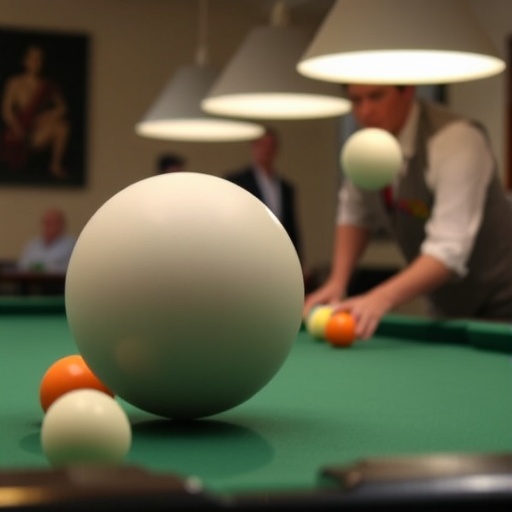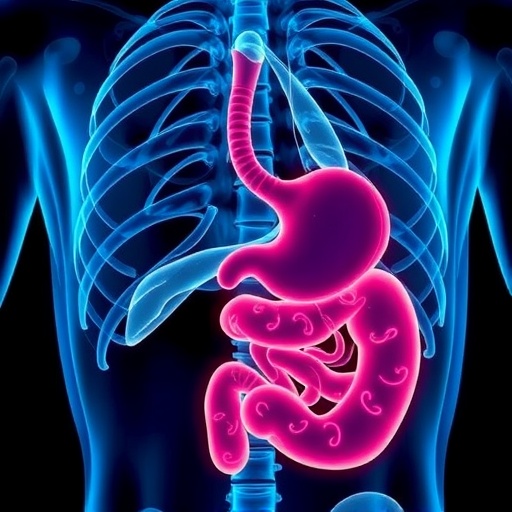In recent years, the assessment of elderly individuals’ functionality has gained significant importance in geriatric research. Among various methods, slowness tests have emerged as valuable tools for gauging physical dexterity and cognitive processing speed in aging populations. A groundbreaking study examined the intra-observer and inter-observer repeatability of two widely recognized slowness tests: the Moberg picking-up test and the Twelve-ball test. This research holds the potential to transform how clinicians evaluate and monitor the physical abilities of older adults.
The Moberg picking-up test is a widely utilized assessment that measures fine motor skills and manual dexterity. In this test, participants are asked to pick up small items from a surface as quickly as possible. The total time taken to complete the task is recorded. This test is not only indicative of physical capabilities but also serves as a reflection of cognitive processing speed, providing a comprehensive overview of an individual’s functional ability. However, its effectiveness hinges on the reliability of the measurements taken.
In contrast, the Twelve-ball test involves participants manipulating and organizing twelve balls of different sizes or colors within a set timeframe. This task challenges both cognitive function and motor skills, further emphasizing the dual aspects of aged functionality. As with any assessment, the credibility of these tests relies heavily on their reproducibility—how consistently the results can be replicated under similar conditions, whether by the same observer or different observers.
The study led by researchers Abolhassani, Fustinoni, and Henchoz aimed to investigate both intra-observer repeatability and inter-observer reliability for the Moberg and Twelve-ball tests. Intra-observer reliability refers to the consistency of measurements taken by the same examiner across multiple occasions, while inter-observer reliability involves evaluating the degree of agreement among different examiners. Understanding these parameters is crucial for establishing the credibility and usefulness of these assessment tools in clinical and research settings.
Using a comprehensive methodological approach, the researchers conducted multiple trials with diverse participant groups. Each participant was assessed using both the Moberg and Twelve-ball tests, allowing for a detailed analysis of the results. By employing statistical methods to quantify repeatability, the researchers were able to determine the extent to which variability exists in the measurements.
The findings highlighted that both tests demonstrated notable levels of repeatability among observers, suggesting they can provide reliable insights into the functional capabilities of elderly individuals. This level of reliability is essential, as it enables healthcare providers to make informed decisions regarding patient care and intervention strategies based on consistent data.
Additionally, the researchers found that variations occurred, underscoring the importance of training and standardization in administering these tests. Inconsistencies could arise from factors such as differences in the testing environment, examiner biases, and even the psychological state of the participant on the testing day. By pinpointing these sources of variability, the study paves the way for developing guidelines to enhance the accuracy of these assessments.
Furthermore, the implications of such findings extend beyond individual assessments. Understanding the repeatability of these tests can influence research methodologies in geriatric studies, particularly in longitudinal studies where tracking changes in functionality over time is critical. Reliable assessments could lead to more effective tracking of patients’ progress, adjustments in therapeutic approaches, and improved overall patient outcomes.
The research also contributes to the broader discourse on the importance of functional assessments in geriatrics, a field increasingly focused on maintaining independence and quality of life for aging populations. Clinicians often seek objective measures to support their clinical judgments and interventions, making reliable assessments invaluable in this context.
Moreover, as the global population ages, the necessity for effective assessment tools becomes even more pronounced. By ensuring that tests like the Moberg picking-up and Twelve-ball tests are consistent in their measurements, healthcare providers can better navigate the complexities of geriatric care, leading to tailored interventions that align closely with individual needs.
In summary, the study provides strong evidence supporting the repeatability of two essential slowness tests often used in geriatric assessments. Its contributions to understanding intra-observer and inter-observer reliability mark a significant advancement for practitioners in the field. As this research gains traction, it stands to influence clinical practices and future studies, creating a ripple effect that may improve the lives of countless elderly individuals.
As we delve deeper into geriatric research, the reliability of assessment tools will remain a cornerstone in fostering a comprehensive understanding of aging. The Moberg and Twelve-ball tests exemplify how targeted studies can yield beneficial insights, driving forward a new era of informed healthcare for the elderly.
In conclusion, enhancing the reliability of slowness tests through continued research and validation efforts can ultimately lead to a paradigm shift in how geriatric function is evaluated and managed. As this field evolves, the integration of rigorous assessment tools will be crucial in ensuring that the aging population receives the quality care and attention it deserves.
Subject of Research: Assessment of intra-observer and inter-observer repeatability of slowness tests in geriatric functionality.
Article Title: Intra-observer and inter-observer repeatability of two slowness tests: Moberg picking-up and Twelve-ball tests.
Article References:
Abolhassani, N., Fustinoni, S. & Henchoz, Y. Intra-observer and inter-observer repeatability of two slowness tests: Moberg picking-up and Twelve-ball tests.
BMC Geriatr 25, 916 (2025). https://doi.org/10.1186/s12877-025-06494-4
Image Credits: AI Generated
DOI: https://doi.org/10.1186/s12877-025-06494-4
Keywords: Geriatric assessment, slowness tests, Moberg picking-up, Twelve-ball test, intra-observer reliability, inter-observer reliability, functionality, aging population.
Tags: assessment tools for elderly individualscognitive function and motor skillselderly functionality researchelderly manual dexterity evaluationgeriatric functional assessment methodsintra-observer inter-observer reliabilitymeasuring physical abilities in older adultsMoberg picking-up test reliabilityphysical dexterity in aging populationsrepeatability of slowness testsslowness tests in geriatric careTwelve-ball test cognitive processing





